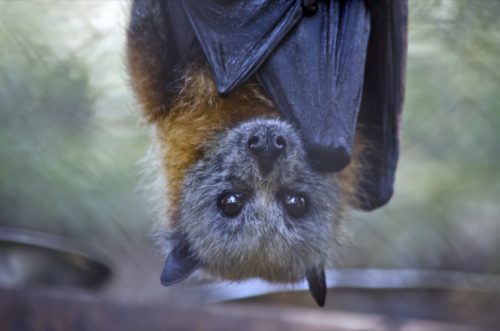U.S. Just Declared 21 Species of Animals Extinct: “It’s a Wake-Up Call”

When we think about “endangered species,” exotic creatures like panda bears, orangutans, and tigers often come to mind. But in reality, according to the World Wildlife Foundation, there are millions of endangered species worldwide that could go extinct—and this includes native species here in the U.S. In fact, according to a recent press release from the U.S. Fish and Wildlife Service (FWS), 21 of America’s native animal species have been removed from the endangered list, as they’re now officially extinct. Read on to find out why officials warn this is “a wake-up call.”
RELATED: Black Widow Spiders May Go Extinct—But Venomous Brown Widows Are on the Rise.
Experts say that efforts to save these species “came too late.”

On Oct. 16, the FWS issued a press release confirming that 21 species will be delisted from the Endangered Species Act (ESA) due to extinction. Per the release, most were listed under the ESA in the ’70s and ’80s, when there were very small numbers left. The FWS notes that even at the time they were listed, some of these species may have already been extinct.
“Federal protection came too late to reverse these species’ decline, and it’s a wake-up call on the importance of conserving imperiled species before it’s too late,” FWS Director Martha Williams, said in the release. “As we commemorate 50 years of the Endangered Species Act this year, we are reminded of the Act’s purpose to be a safety net that stops the journey toward extinction. The ultimate goal is to recover these species, so they no longer need the Act’s protection.”
RELATED: 75 Weird Animal Facts Everyone Should Know.
The list includes a mammal, birds, fish, and mussels.

The 21 species being delisted include one mammal, the Little Mariana fruit bat, which was found in Guam and was last spotted back in 1968.
Ten birds are also now extinct, including Bachman’s warbler, which was found in Florida and South Carolina, and the Bridled white-eye, which was also found in Guam.
Eight of the now-extinct birds were honeycreepers found in Hawaii: the Kauai akialoa, Kauai nukupuu, Kauaʻi ʻōʻō, Large Kauai thrush, Maui ākepa, Maui nukupuʻu, Molokai creeper, and Po`ouli.
Two native fish are also extinct, including the San Marcus gambusia, found in Texas and last spotted in 1983, and the Scioto madtom, found in Ohio and last spotted in 1957.
Eight species of mussels found in the eastern portion of the U.S. are now extinct, too. Delisted species include the flat pigtoe, southern acornshell, stirrupshell, upland combshell, green-blossom pearly mussel, tubercled-blossom pearly mussel, turgid-blossom pearly mussel, and the yellow-blossom pearly mussel.
RELATED: Invasive Spiders With 3-Foot Webs Are Spreading and Can’t Be Stopped.
Hawaiian birds are in a dire situation.

Hawaiian birds are in trouble due to development and agriculture that destroyed their habitats, with non-native mosquitoes that carry avian diseases dealing the final blow, according to a press release from the Center for Biological Diversity.
The center’s endangered species director, Noah Greenwald, also told Axios that climate change impacts species in Hawaii. The ‘akikiki, another native Hawaiian bird, was nearly eliminated during the recent wildfires on Maui, as fires affected a sanctuary on the island. According to Hawaii’s Department of Land and Natural Resources, there are only five pairs of these birds left in the wild.
“Few people realize the extent to which the crises of extinction and climate change are deeply intertwined,” Greenwald said in the press release. “Both threaten to undo our very way of life, leaving our children with a considerably poorer planet. One silver lining to this sad situation is that protecting and restoring forests, grasslands and other natural habitats will help address both.”
RELATED: Giant Invasive Pythons Are Moving North and “Need an Army” to Be Stopped.
Two species will remain on the ESA list.

In Sept. 2021, the FWS suggested that 23 native species be removed from the ESA due to extinction. However, after receiving feedback from the public, two species will remain on the endangered list.
One of these was actually a plant, Phyllostegia glabra var. lanaiensis. The perennial herb in the mint family is found in Hawaii and has no common name, the FWS notes, adding that surveys found “new, potentially suitable habitats for the species.”
The ivory-billed woodpecker was also removed from the original proposal. According to the FWS, it plans to conduct additional reviews and analyses before officially delisting the bird.
The FWS also highlighted the effectiveness of the ESA, which has saved 99 percent of listed species from extinction, with 100 species of plants and animals delisted due to recovery efforts.
RELATED: For more up-to-date information, sign up for our daily newsletter.